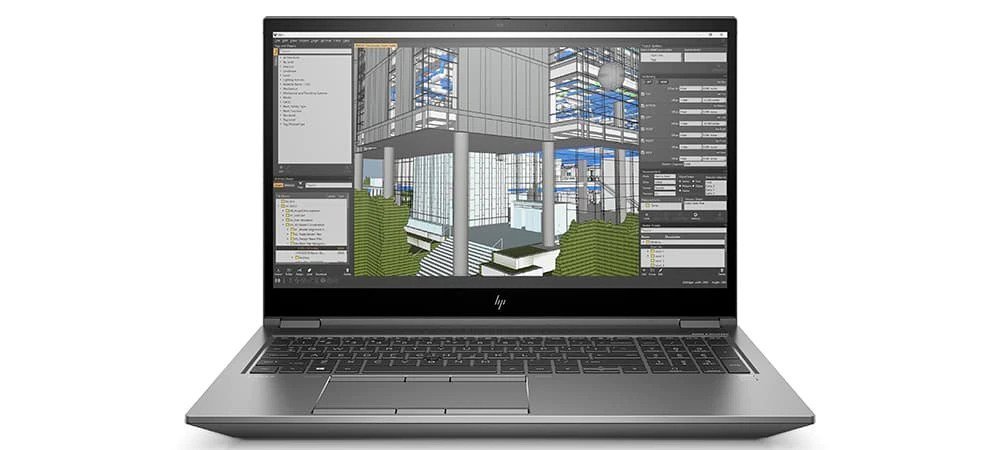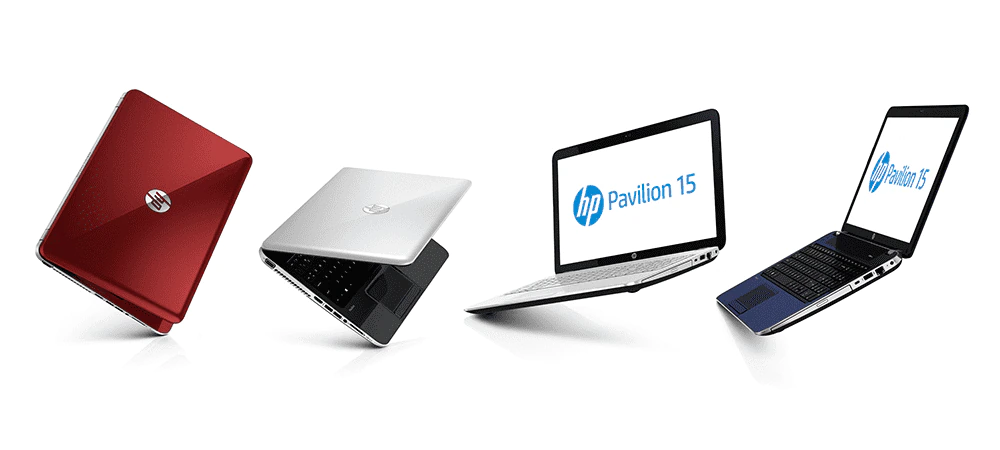Thank you for visiting the MALAYSIA HP Store
-
Contact Us
CONTACT USCall us
- Sales
- 1800 88 4889
- Technical support
- 1800 88 4889
Mon-Fri 8:30AM to 5:30PM
(exc. Public Holidays)
Chat with us- Our specialist are here to help
- Live chat
- Sales
- 60166999350(WhatsApp)
-

Mon-Fri 8.30am - 5.30pm
(exc. Public Holidays)
Live product demo
Store finder Locate our storesSubmit feedback We value your opinion! - Location
- My Account
Search
How to Choose the Right HP Computer for Video Meetings

Posted:
October 23, 2023
Categories:
Laptops

For so many of us, teleconferencing and remote interactions are a daily necessity. That can put a lot of stress on your personal computer, especially if it’s older or underpowered. Some problems are easy to move past, but others can put your workflow at risk, especially if you’re shopping for a new laptop on a limited budget.
You can save yourself trouble by doing some research into the right HP computer for video conferencing before you buy.
In this article, we’ll look at the most important technical requirements to keep in mind if you regularly use teleconferencing software to collaborate with coworkers or catch up with family and friends. We’ll also provide shopping and product tips, plus a few useful links for further reading.
Contents
What to keep in mind for the best video meeting experience
1. NUMBER OF DEVICES AND ACTIVITIES
If you’re prioritizing a seamless video meeting experience, start out by considering the number of devices in your household and how they’re used. Even basic activities like streaming and online browsing can lead to bandwidth issues.
- How many active internet users are in your home?
- How many of their devices are online?
When your service isn’t great or you’re frequently competing for bandwidth, you’re likely to notice poor performance during video calls. There are several ways to deal with this, but it’s important to remember that device shortcomings aren’t always the culprit for audio or video degradation.
2. HARDWARE SPECS
The quality of your video meeting experience depends heavily on your PC’s hardware. The processor, storage format and volume, and RAM capacity can all make a difference when running video meeting apps like Zoom or Skype. You should always take a comprehensive look at your specs, though sometimes certain features matter more than others.
RAM
Make RAM a top priority, particularly if you spend lots of time on calls and need to access other software at the same time. For most users, 16GB of RAM is enough to minimize disruption and risk from running simultaneous applications. That means you can open and use other programs, like Word or Google Docs, seamlessly during a meeting, without fear of losing audio or freezing the call.
CPU & storage
When you shop, look for devices with a recent processor type. For the best overall quality, focus on Intel® i5 options or better. Storage is important, too, and you can enjoy the smoothest, most responsive experience when you choose a solid-state drive (SSD).
3. RELATED TECH FEATURES
Always check on other features that can make life a little less stressful, like included accessories and ports. It also never hurts to check what type of camera your preferred device uses. HP products tend to feature a variety of high-quality webcams and audio options, including extensive collaboration with Bang & Olufsen.
Camera
Many computers use an HD or SD camera, but we recommend Full High Definition (FHD) options for the best video meeting experience. Total visual accuracy may not be a top priority for everyone, but it’s an easy way to get the best possible picture.
Ports & audio
You should also make sure you have all the connection options you need, including audio inputs, your preferred USB format, and Ethernet. Display extras like anti-glare or low blue light levels are also a big comfort bonus, especially if you work under varying lighting conditions throughout the day.
Screen
Ever heard of blue light levels? Some of the blue light emitted by displays may lead to eye strain. That promotes eye fatigue and dryness, and may even lead to headaches and vision issues. Low blue light (often abbreviated to LBL) displays help filter out the harmful part of the blue light spectrum, reducing the toll of late nights or long calls glued to your computer screen.
4. FORMAT AND PORTABILITY
Some users may prefer non-traditional laptop formats, like an HP convertible laptop. If you’re shopping at HP and see “x360” in a laptop’s product name, that means it supports both tablet and laptop work styles. The device is fully convertible, which means you can fold the display back and use it as a tablet.
You can experiment with other modes as well, including tent mode, which is perfect for long meetings. Plus, the touch screen display is a good way to mix up your workflow or improve collaboration.
As far as portability is concerned, we’re primarily talking about weight and thickness. While you may not mind a heavier build if you primarily work at a desk, the 3 to 4 lbs range shows off a balance of options and low overall weight. These options are typically thinner, too, providing well-rounded mobility.
5. WIFI
When it comes to WiFi, it’s important to remember that newer devices tend to perform better, especially if you’re in meetings regularly or running multiple applications during a call.
If you aren’t seeing other options in your price range, focus on the most recent device to fit your criteria. You can still consider upgraded WiFi options for certain devices during checkout, but you generally have less to worry about when buying a newly released PC.
Collaboration software like Microsoft Teams or Slack take up their share of bandwidth, but it’s important to remember that even the best hardware can’t win against a bad connection. If you’re still dealing with headaches after upgrading your device, you may need to call your internet service provider.
Additional considerations when buying a computer for video meetings
6. PRIORITIZE SPECS FOR STABILITY
When you set the bar high for RAM and storage, you’re setting yourself up for a more streamlined video conference experience, including better response times and reduced visual errors.
There’s no need to spend more on a better graphics card, for instance, unless you need one for video/photo editing or gaming.
A 4K display can help deliver the highest quality output, but it won’t make a big difference on a weak connection. Trying to maintain a higher-fidelity output may actually put more strain on your system.
While the right camera may be a top priority for some, it shouldn’t be a dealbreaker.
If you’re on a tight budget, consider shifting your costs around. If you upgraded and still can’t hold a meeting together, it may be time for a better internet connection or a different video conferencing platform.
7. CONSIDER A HARD-WIRED CONNECTION
A hard-wired connection is a great way to get around weaker connections. If you’re considering this, make sure you have the right ports available. You won’t have to worry with most HP desktops, which typically include an RJ45/Ethernet port, but double-check that your preferred laptop has the port. Or consider a compatible dock.
Best HP computer models for specific video call uses
1. SCHOOL
The HP Chromebook series is a great place to start if you need an affordable notebook for younger users. The Chrome OS helps streamline hardware and provides your children with access to the functionality they need for schoolwork. The 14-inch HP Chromebook is a great example from this line, and it has an optional touch screen and affordable price tag.
For students who need some additional performance, convertible HP laptops deliver versatility and expanded hardware. They’re perfect for a variety of ages, especially with the included touch screen. For school use, the 15-inch HP Spectre x360 convertible laptop is a top choice when it comes to performance.
Want to see if you can save on your purchase? Read more about HP’s discounts for students.
2. WORK
If you’re shopping for a work-from-home setup, the HP EliteBook line is a showstopper. With 16GB of memory and a 1TB SSD, the HP EliteBook x360 830 G7 notebook PC is a winning choice. It also has options to customize your specs and includes the latest CPUs.
For professionals who need the best possible performance and visual accuracy, consider an HP ZBook. They boast top marks for hardware, so they’ll have no problem running your preferred video conferencing software. You can also find desktops in this series, like the HP Z2 G4 workstation. It’s a popular and affordable option, with plenty of room to customize.
Check out more desktop options for small businesses and remote work.
3. HOME
Mixed home users may enjoy an integrated solution like HP All-in-One desktops, which provide a streamlined hardware layout and minimize clutter. For part-time work routines, the HP All-in-One 24-inch model is a strong choice with a competitive price.
f you’re primarily shopping for a laptop, there are tons of options with 16GB of RAM or more. The 15-inch HP Pavilion laptop is a strong pick that allows for plenty of customization. Plus, it has the latest hardware features like a 10th Generation Intel processor, Intel Iris® Plus Graphics, and more. The 15-inch HP ENVY x360 convertible laptop also ticks a lot of boxes for high stability, with even more performance options.
Recommended all-around HP computers for video meetings
HP® also has a variety of entry-level notebooks that balance cost and performance. If you like a particular model but it doesn't have all the features you want, look for a customizable option instead.
Or, if you want to future-proof your decision, the 15-inch HP Pavilion laptop is a versatile choice at its price point. There are plenty of options to customize, including four color options and a top configuration with 16GB of RAM and 1TB of SSD storage. It’s also under 4 lbs, only 0.70-inches thick, and ENERGY STAR® certified.
Additional resources
Trying to get the best deal? You can always expect a bit more savings around certain times of the year.
For the most up-to-date special offers, you can check out our Top Deals page. For discounts on particular product lines and devices, students can review the HP page at UNiDAYS.
CONTACT US
Call us
- Sales
- 1800 88 4889
- Technical support
- 1800 88 4889
Mon-Fri 8:30AM to 5:30PM
(exc. Public Holidays)
Chat with us
- Our specialist are here to help
- Live chat
- Sales
- 60166999350(WhatsApp)
-

Mon-Fri 8.30am - 5.30pm
(exc. Public Holidays)
Live product demo
Store finder
Locate our stores
Submit feedback
We value your opinion!















